Key Takeaways
- Strategic Mastery: Elevate your digital strategy by mastering SEO Competitor Analysis—uncover competitor secrets, identify opportunities, and position yourself as an industry leader.
- Tool-Powered Precision: Leverage powerful tools like Semrush, Ahrefs, and Moz for precise keyword insights, backlink analysis, and a comprehensive examination of the competitive landscape.
- Future-Proofing Your SEO: Anticipate trends with AI, voice search, user experience, and emerging technologies. SEO Competitor Analysis is not just a guide; it’s your roadmap to staying ahead in the dynamic digital arena.
Welcome to the definitive guide on SEO Competitor Analysis—an indispensable resource for digital marketers, business owners, and SEO enthusiasts striving to conquer the dynamic landscape of search engine optimization.
In this comprehensive guide, we will delve deep into the intricacies of SEO Competitor Analysis, providing you with the knowledge and tools necessary to gain a competitive edge in the ever-evolving online realm.
Understanding the Essence of SEO Competitor Analysis
Search Engine Optimization (SEO) is the backbone of online visibility, and staying ahead of the curve requires more than just optimizing your own website.
The strategic analysis of your competitors’ SEO performance emerges as a crucial component in devising a winning digital strategy.
SEO Competitor Analysis empowers you with valuable insights into your rivals’ tactics, allowing you to make informed decisions and refine your own approach to achieve unparalleled success.

Why is SEO Competitor Analysis Vital?
The digital arena is fiercely competitive, with businesses vying for the top spot in search engine results.
As algorithms evolve and user behaviours shift, the need for a nuanced understanding of your competitors becomes paramount.
By unravelling the mysteries of their SEO strategies, you gain a strategic advantage, unlocking opportunities and mitigating potential threats.
In this guide, we will equip you with the tools and methodologies to embark on a journey of comprehensive SEO Competitor Analysis.
From selecting the right competitors for analysis to utilizing cutting-edge tools, we leave no stone unturned in ensuring you have the knowledge needed to navigate the competitive digital landscape.
What to Expect in This Guide
We’ll kick things off by understanding the fundamentals. Learn how to choose the right competitors and explore the essential tools for a robust analysis.
Dive deep into the core elements, including keyword analysis, on-page SEO factors, and backlink profiles, unravelling the secrets that contribute to your competitors’ success.
Discover a toolkit of industry-leading tools such as Google Analytics, Semrush, Ahrefs, and Moz.
Understand how to leverage these platforms to glean actionable insights.
Follow our step-by-step process to conduct SEO Competitor Analysis effectively.
From setting objectives to drawing actionable insights, we provide a roadmap for success.
Stay ahead of the curve by exploring emerging trends in SEO Competitor Analysis.
Adapt your strategy to the evolving landscape of search engine algorithms and technological advancements.
Unlock Your Competitive Edge
Embark on this journey with us as we unravel the intricacies of SEO Competitor Analysis.
By the end of this guide, you’ll be armed with the knowledge and insights needed to not only keep pace with your competitors but surpass them in the dynamic and ever-evolving world of SEO. Let’s dive in and elevate your digital strategy to new heights.
But, before we venture further, we like to share who we are and what we do.
About AppLabx
From developing a solid marketing plan to creating compelling content, optimizing for search engines, leveraging social media, and utilizing paid advertising, AppLabx offers a comprehensive suite of digital marketing services designed to drive growth and profitability for your business.
AppLabx is well known for helping companies and startups use SEO to drive web traffic to their websites and web apps.
At AppLabx, we understand that no two businesses are alike. That’s why we take a personalized approach to every project, working closely with our clients to understand their unique needs and goals, and developing customized strategies to help them achieve success.
If you need a digital consultation, then send in an inquiry here.
SEO Competitor Analysis: A Complete and Useful Guide
- Why Conduct SEO Competitor Analysis?
- Getting Started with SEO Competitor Analysis
- Key Elements of SEO Competitor Analysis
- Tools for SEO Competitor Analysis
- Step-by-Step Guide to Conducting SEO Competitor Analysis
- Future Trends in SEO Competitor Analysis
1. Why Conduct SEO Competitor Analysis?
In the fast-paced world of digital marketing, SEO Competitor Analysis stands as a linchpin for success.
This comprehensive exploration delves into the multifaceted reasons that make this practice not just beneficial but essential for businesses striving to dominate the online realm.

Benchmarking and Setting Realistic Goals
Contextual Benchmarking
Regularly benchmarking against competitors allows you to conduct an accurate SWOT analysis for your marketing strategy. This underscores the critical importance of contextual benchmarking in the digital landscape.
Setting Realistic Goals
Businesses that set specific goals are 429% more likely to report success.
SEO Competitor Analysis provides a realistic benchmark for goal-setting by helping you understand what is achievable in your industry.
Uncovering Competitor Strategies for Organic Search Visibility
Keyword Analysis
A study by Ahrefs found that 96.55% of pages get no organic traffic from Google.
Analyzing competitor keyword strategies becomes pivotal, as it provides insights into which keywords are worth targeting and the potential organic traffic you can gain.
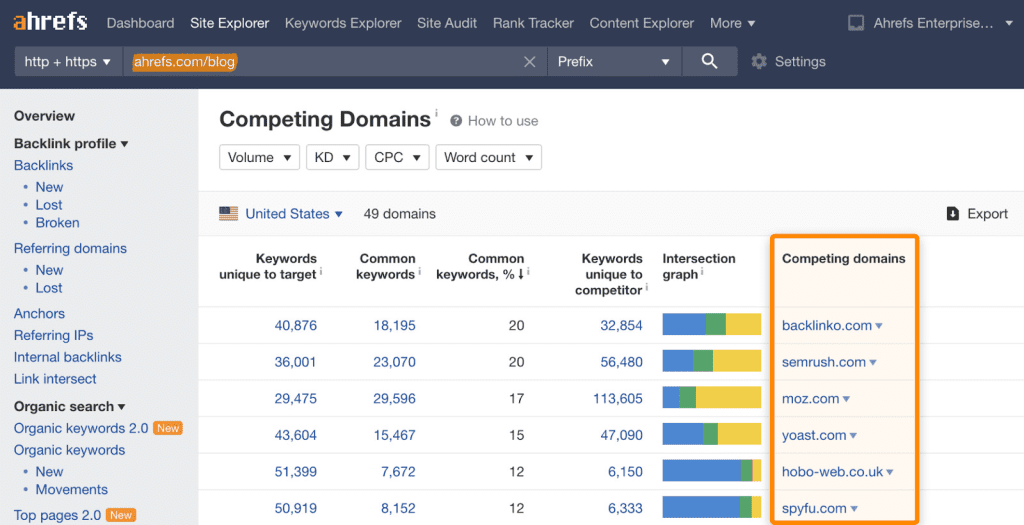
Content Strategy
It is revealed that longer content does tend to rank best in search engines, with the average first-page result being 1,447 words long.
Understanding your competitors’ content strategies can guide your own content creation efforts.
Identifying Opportunities and Threats
Gap Analysis
Conducting a gap analysis helps identify areas where your competitors may be falling short.
For example, if competitors are neglecting mobile optimization, you can seize the opportunity to capture mobile traffic. According to Statista, in the first quarter of 2023, mobile devices (excluding tablets) generated 58.33 per cent of global website traffic.
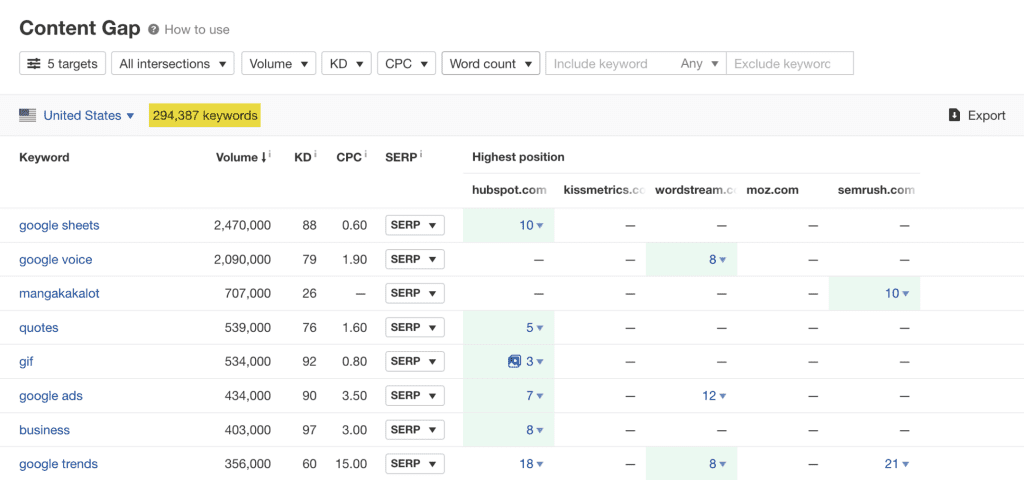
Threat Mitigation
Proactively identifying threats enables you to fortify your strategy.
For instance, Google reports that as page load time goes from one second to 10 seconds, the probability of a mobile site visitor bouncing increases by 123%.
Adaptation to Dynamic Algorithm Changes
Algorithmic Adaptation
SEO Competitor Analysis serves as a compass in the ever-changing landscape of search algorithms.
For instance, Google’s Core Web Vitals became a ranking factor in 2021. Analyzing competitors who swiftly adapted to these changes can guide your own adjustments.
Ranking Fluctuations
Understanding how competitors navigate ranking fluctuations provides insights into algorithmic nuances.
In essence, conducting SEO Competitor Analysis isn’t merely a choice—it’s a strategic imperative.
By benchmarking, uncovering strategies, identifying opportunities and threats, and adapting to dynamic changes, you position yourself not just to compete but to lead in the digital arena.
2. Getting Started with SEO Competitor Analysis
Embarking on the journey of SEO Competitor Analysis requires a strategic approach and a meticulous understanding of the tools at your disposal.
This section serves as your compass, guiding you through the crucial steps to initiate a comprehensive analysis that will shape your digital strategy.

Selecting Competitors for Analysis
Direct Competitors
Identify direct competitors within your industry that share a similar target audience and offer comparable products or services.
Tools like Semrush can help you generate a list of organic competitors based on shared keywords and market presence.
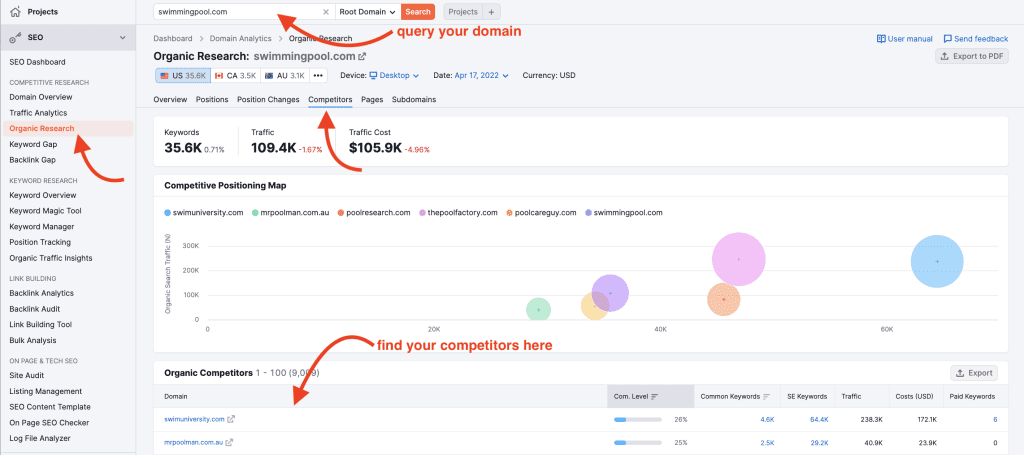
Indirect Competitors
Don’t limit your analysis to direct competitors. Include indirect competitors—those who may target a different audience but compete for similar keywords or share industry space.
This broader perspective can reveal untapped opportunities.
3. Key Elements of SEO Competitor Analysis
Delving into the core elements of SEO Competitor Analysis unveils a treasure trove of insights that can reshape your digital strategy.
By meticulously examining the strategies employed by your competitors, you gain a nuanced understanding of what works in your industry and how to outpace the competition.

Keyword Analysis
Identifying Target Keywords
Unravel the keywords that drive organic traffic to your competitors.
Semrush’s Organic Research tool provides a comprehensive overview of a competitor’s top-ranking keywords, search volume, and traffic share.
Analyzing Competitor Keyword Strategies
Assess the diversity and relevance of your competitors’ keyword portfolios.
Ahrefs’ Keyword Explorer allows you to dissect a competitor’s keyword strategy, providing data on search volume, keyword difficulty, and potential traffic.
On-Page SEO Analysis
Content Quality and Relevance
Scrutinize the content on competitor pages to understand its quality and relevance.
Tools like BuzzSumo can reveal the most shared content, indicating what resonates with the audience.
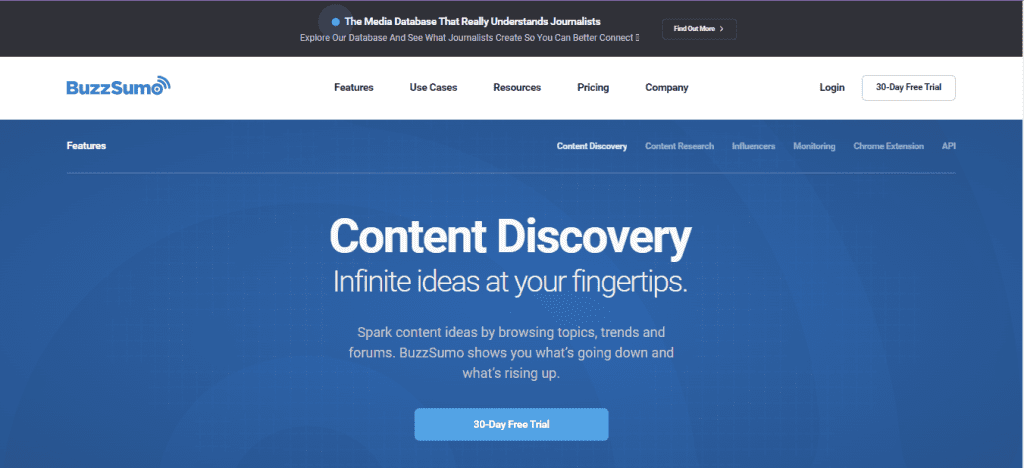
Meta Tags and Descriptions
Evaluate meta tags, titles, and descriptions. SEO tools like Yoast SEO for WordPress enable a detailed analysis of on-page elements, ensuring they align with SEO best practices.
Backlink Profile Analysis
Assessing Link Quality
Quality backlinks are pivotal for SEO success.
Moz’s Link Explorer offers insights into a competitor’s backlink profile, helping you identify authoritative links and potential link-building opportunities.
Understanding Link-Building Strategies
Examine the diversity and origin of your competitors’ backlinks. Ahrefs’ Site Explorer provides a detailed overview of a site’s backlink profile, allowing you to discern their link-building strategies.
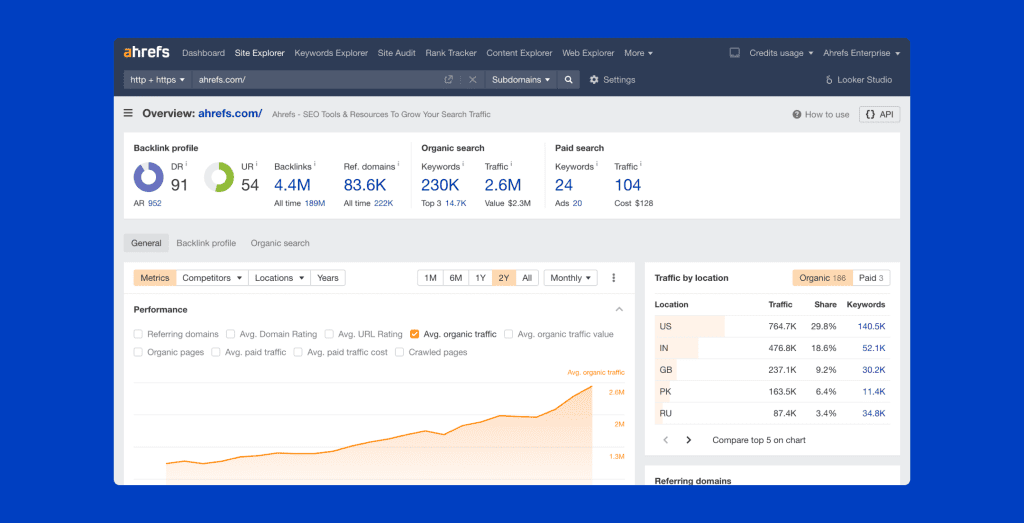
Technical SEO Analysis
Site Structure and Navigation
Assess the structure and navigation of competitor websites.
Screaming Frog crawls websites, revealing insights into URL structures, internal linking, and potential technical issues.
Page Load Speed
Page speed is a critical factor for user experience and SEO. Google’s PageSpeed Insights can analyze a competitor’s site speed and offer suggestions for improvement.

Social Media Presence and Engagement
Social Media Metrics
Gauge your competitors’ social media presence.
Social media analytics tools like Hootsuite or Sprout Social provide data on engagement, reach, and audience demographics.

Content Sharing and Virality
Identify content that resonates on social media.
BuzzSumo can highlight the most shared content, shedding light on what captures the attention of your competitors’ audience.
In the intricate tapestry of SEO Competitor Analysis, these key elements serve as guideposts.
From understanding keyword strategies to dissecting on-page elements and backlink profiles, each facet contributes to a comprehensive view that empowers you to refine your own digital strategy and outmanoeuvre the competition.
4. Tools for SEO Competitor Analysis
Unlocking the full potential of SEO Competitor Analysis requires leveraging a robust set of tools that provide comprehensive insights into your competitors’ strategies.
From dissecting keywords to scrutinizing backlink profiles, these tools empower you to make informed decisions and refine your own digital approach.

Google Analytics
Traffic Analysis
Google Analytics is a foundational tool for understanding your website’s performance.
Analyze the traffic sources, user behaviour, and engagement metrics to benchmark against competitors.
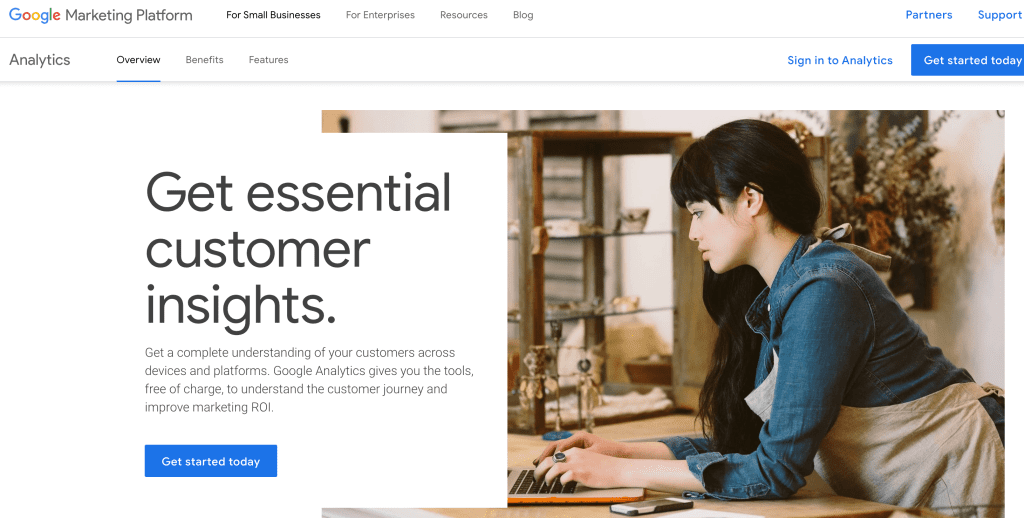
Semrush
Competitor Keyword Research
Semrush’s Organic Research tool is indispensable for identifying competitors’ top-ranking keywords and providing data on search volume, traffic share, and keyword difficulty.
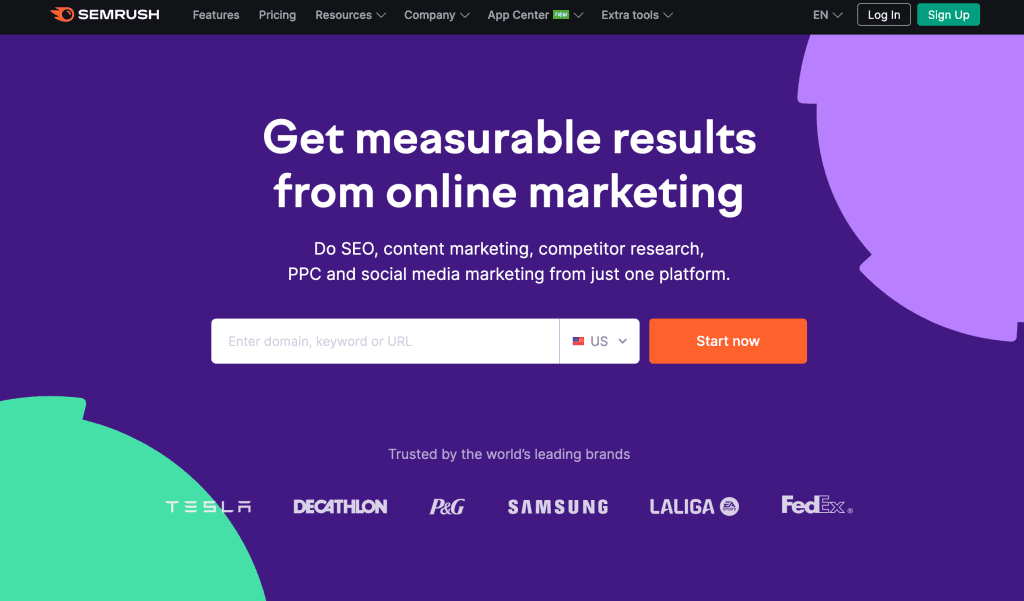
Backlink Analysis
Utilize Semrush’s Backlink Analytics to gain insights into the quantity and quality of your competitors’ backlinks, helping you refine your own link-building strategy.
Ahrefs
Keyword Explorer
Ahrefs’ Keyword Explorer allows you to dissect competitors’ keyword strategies, providing data on search volume, keyword difficulty, and potential traffic.
Site Explorer
Dive deep into competitors’ backlink profiles with Ahrefs’ Site Explorer. Understand the link-building strategies and identify authoritative links that contribute to their SEO success.
Moz
Link Explorer
Moz’s Link Explorer is a valuable tool for backlink analysis, helping you assess the quality and quantity of competitors’ backlinks.
BuzzSumo
Content Analysis
BuzzSumo excels in content analysis, revealing the most shared content across social media platforms. Identify what resonates with your competitors’ audience and inform your own content strategy.
Screaming Frog
Website Crawling
Screaming Frog is a powerful website crawling tool that aids in technical SEO analysis. Uncover insights into URL structures, internal linking, and potential technical issues.
Google Search Console
Search Performance
Google Search Console provides invaluable data on how your site performs in Google’s search results. Analyze clicks, impressions, and average position to gauge your performance against competitors.
Hootsuite
Social Media Analytics
Hootsuite offers social media analytics, providing insights into your competitors’ social media presence, engagement metrics, and audience demographics.
Incorporating these tools into your SEO Competitor Analysis arsenal empowers you to glean actionable insights.
Whether unraveling keyword strategies, dissecting backlink profiles, or analyzing social media presence, each tool plays a pivotal role in enhancing your understanding of the competitive landscape.
5. Step-by-Step Guide to Conducting SEO Competitor Analysis
Navigating the intricacies of SEO Competitor Analysis demands a systematic approach.
This step-by-step guide provides a comprehensive roadmap, enabling you to unravel competitor strategies and fortify your own digital presence.
Setting Objectives and Goals
Define Clear Objectives
Establish the purpose of your SEO Competitor Analysis. Are you aiming to outperform competitors in specific keywords, improve content engagement, or enhance backlink quality? Clear objectives guide the analysis process.
Align with Business Goals
Ensure that your analysis aligns with broader business goals. Understanding the correlation between SEO performance and business success is pivotal for strategic decision-making.
Choosing the Right Tools for the Job
Semrush for Keyword Insights
Utilize Semrush’s Organic Research tool to gain insights into competitors’ top-ranking keywords, search volume, and traffic share.
Ahrefs for Backlink Analysis
Employ Ahrefs’ Site Explorer to delve into competitors’ backlink profiles, identifying link-building strategies and authoritative links.
BuzzSumo for Content Analysis
Leverage BuzzSumo to analyze the most shared content across social media platforms, identifying trends and engagement metrics.
Analyzing Competitor Keywords
Identify Top-Performing Keywords
Use Semrush to identify the keywords that bring the most organic traffic to your competitors. Assess the search volume, CPC, and keyword difficulty to prioritize your focus.
Uncover Keyword Gaps
Ahrefs’ Keyword Explorer helps uncover keyword gaps by identifying keywords your competitors rank for but you do not. This presents expansion opportunities.
Assessing On-Page SEO Factors
Evaluate Content Quality
Utilize BuzzSumo to identify your competitor’s most shared content. Analyze factors such as content length, format, and topic relevance.
On-Page SEO Tools
Leverage on-page SEO tools like Yoast SEO to assess your competitors’ meta tags, headers, and overall on-page optimization.
Evaluating Backlink Profiles
Assess Link Quality
Moz’s Link Explorer provides insights into the quality and quantity of your competitors’ backlinks. Identify authoritative links and potential opportunities for your own link-building strategy.
Link Building Strategies
Ahrefs’ Backlink Analytics reveals the link-building strategies employed by your competitors, helping you refine your own approach.
Drawing Insights and Creating an Action Plan
Identify Strengths and Weaknesses
Synthesize the data collected to identify your competitors’ strengths and weaknesses. Assess their high-performing keywords, content strategies, and backlink profiles.
Create an Actionable Strategy
Formulate an action plan based on your findings. This may include optimizing existing content, targeting specific keywords, or enhancing your backlink profile.
Iterate and Adapt
SEO is dynamic, and competitor strategies evolve. Regularly revisit your analysis, adapting your strategy to align with changing trends and algorithm updates.
In conclusion, a systematic approach to SEO Competitor Analysis, incorporating the right tools and methodologies, empowers you to not only keep pace with competitors but to surpass them strategically.
By setting clear objectives, leveraging powerful tools, and drawing actionable insights, you position yourself to lead in the dynamic digital landscape.
6. Future Trends in SEO Competitor Analysis
As the digital landscape continues to evolve, the future of SEO Competitor Analysis promises innovative trends and advancements that will reshape the way businesses strategize for online success.
Staying ahead of these trends is crucial for maintaining a competitive edge and adapting to the ever-changing dynamics of search engine optimization.

AI-Powered Competitor Analysis
Automated Data Processing
The integration of Artificial Intelligence (AI) in SEO tools will revolutionize competitor analysis by automating data processing. AI algorithms can sift through vast datasets, providing quicker and more accurate insights into competitor strategies.
Predictive Analytics
AI-driven tools will incorporate predictive analytics, forecasting competitor trends and helping businesses anticipate shifts in the digital landscape. This proactive approach enables more agile and strategic decision-making.
Voice Search Optimization Analysis
Voice Search Trends
With the proliferation of voice-activated devices, SEO Competitor Analysis will need to adapt to voice search optimization trends. Analyzing competitors’ strategies for voice search will become integral to maintaining visibility in the era of virtual assistants.
Conversational Keyword Analysis
Future tools will focus on dissecting conversational keywords and understanding user intent in voice searches. This shift requires a more nuanced approach to keyword analysis for SEO Competitor Analysis.
User Experience (UX) Analysis
Core Web Vitals Integration
As user experience becomes a crucial ranking factor, SEO Competitor Analysis will incorporate Core Web Vitals analysis. Tools will evaluate competitors’ websites based on loading times, interactivity, and visual stability.
Mobile-First Indexing Considerations
With Google’s mobile-first indexing, the analysis will shift towards evaluating competitors’ mobile responsiveness and optimization. A focus on mobile user experience is imperative for SEO success.
Visual Content Analysis
Image and Video SEO
The rise of visual content calls for SEO Competitor Analysis tools that can decipher image and video optimization strategies. Analyzing competitors’ use of alt text, image quality, and video transcripts will become integral.
Visual Search Considerations
Visual search is on the ascent, with users relying on images for queries. SEO Competitor Analysis tools will need to adapt to assess how competitors optimize visual content for search engines.
Local SEO Competitor Analysis
Local Search Trends
The emphasis on local search continues to grow. Future trends in SEO Competitor Analysis will involve dissecting competitors’ local SEO strategies, including Google My Business optimization, local citations, and localized content.
Hyperlocal Targeting
Tools will evolve to offer hyperlocal targeting insights, helping businesses understand how competitors optimize for extremely localized searches and tailor their content accordingly.
Blockchain for Data Security
Secure Data Analysis
As data security becomes a paramount concern, blockchain technology may be integrated into SEO Competitor Analysis tools. Blockchain ensures secure and transparent data analysis, safeguarding sensitive information.
Transparent Data Sharing
Blockchain can facilitate transparent data sharing between businesses, enabling collaborative competitor analysis without compromising data integrity.
Augmented Reality (AR) and SEO Analysis
AR Content Optimization
As AR gains prominence in online experiences, SEO Competitor Analysis will need to consider how competitors optimize for augmented reality content. This includes AR-enhanced product listings, virtual try-ons, and more.
Visual Recognition Metrics
Tools may incorporate visual recognition metrics to analyze how competitors utilize AR elements and assess their impact on user engagement and conversion rates.
In conclusion, the future of SEO Competitor Analysis is dynamic and technologically driven.
Embracing AI, voice search, user experience, visual content, local SEO, blockchain, and augmented reality will be essential for businesses aiming to thrive in the evolving digital landscape.
Staying informed and adopting these trends early will position businesses for sustained success in the competitive online sphere.
Conclusion
In the ever-evolving landscape of digital marketing, the significance of SEO Competitor Analysis cannot be overstated.
This complete and useful guide has been your compass, navigating through the intricacies of dissecting competitor strategies to propel your own online presence to unprecedented heights.
As we conclude this exhaustive exploration, let’s distil the key takeaways that cement SEO Competitor Analysis as an indispensable pillar of digital success.
Strategic Imperative: A Recap
SEO Competitor Analysis transcends being a mere choice; it emerges as a strategic imperative.
The insights garnered from benchmarking, uncovering strategies, identifying opportunities and threats, and adapting to dynamic changes position you not just to compete but to lead in the dynamic digital arena.
Powerful Tools for Precision Analysis
Arming yourself with the right tools is paramount.
The arsenal, ranging from Semrush and Ahrefs for keyword and backlink insights to Moz for backlink analysis, BuzzSumo for content exploration, and Google Analytics for traffic metrics, ensures a comprehensive examination of the competitive landscape.
Unveiling Key Elements
Delving into the key elements of SEO Competitor Analysis opens a treasure trove of insights.
From dissecting competitor keywords and on-page SEO factors to evaluating backlink profiles and technical SEO nuances, each facet contributes to a holistic understanding of the digital chessboard.
Strategic Execution: A Step-by-Step Guide
Embarking on SEO Competitor Analysis demands a meticulous step-by-step approach.
Setting clear objectives, choosing the right tools, analyzing keywords, assessing on-page SEO and backlink profiles, and drawing actionable insights collectively form a robust methodology that positions you for strategic execution.
Future-Proofing with Emerging Trends
Anticipating the future is central to staying ahead.
The convergence of AI-powered analysis, voice search optimization, a focus on user experience, visual content analysis, local SEO considerations, blockchain for data security, and the integration of augmented reality underscores the dynamism that lies ahead.
A Call to Action: Mastering the Digital Chessboard
In the fast-paced realm of digital marketing, the journey doesn’t end with analysis; it begins with informed action.
Leverage the insights gained to optimize your content, refine your keyword strategy, enhance user experience, and fortify your backlink profile.
SEO Competitor Analysis isn’t just a guide; it’s your key to mastering the digital chessboard and claiming your spot at the forefront of your industry.
As you embark on this journey armed with a comprehensive understanding of SEO Competitor Analysis, remember that the digital landscape is a canvas of endless possibilities.
Embrace the challenges, adapt to the trends, and let your competitor analysis be the wind beneath your digital wings.
The quest for online supremacy is ongoing, and with the knowledge acquired, you stand not just as a competitor but as a digital trailblazer, charting the course for unrivaled success in the ever-evolving realm of SEO.
If you are looking for a top-class digital marketer, then book a free consultation slot here.
If you find this article useful, why not share it with your friends and business partners, and also leave a nice comment below?
We, at the AppLabx Research Team, strive to bring the latest and most meaningful data, guides, and statistics to your doorstep.
To get access to top-quality guides, click over to the AppLabx Blog.
People also ask
What is SEO competitor analysis?
SEO competitor analysis is the strategic examination of rivals’ online performance to enhance one’s own search engine optimization efforts. It involves evaluating keywords, backlinks, and content strategies, providing insights to refine tactics, outperform competitors, and secure a prominent online presence.
What is the best SEO tool for competitor site analysis?
Among the best SEO tools for competitor site analysis are Semrush, Ahrefs, and Moz. Semrush offers comprehensive keyword insights, Ahrefs excels in backlink analysis, and Moz provides valuable metrics for assessing domain authority and link profiles, enabling a holistic view of competitor strategies.
How do you do the SEO analysis?
To perform SEO analysis:
- Keyword Research: Identify relevant keywords.
- Competitor Analysis: Evaluate rivals’ strategies.
- On-Page SEO: Optimize content and meta tags.
- Backlink Audit: Assess and improve link profile.
- Technical SEO: Ensure site structure and performance.
- Content Quality: Create valuable, shareable content.
- Analytics: Monitor and adapt based on data.
Implementing these steps enhances visibility, ranking, and overall SEO performance.


































